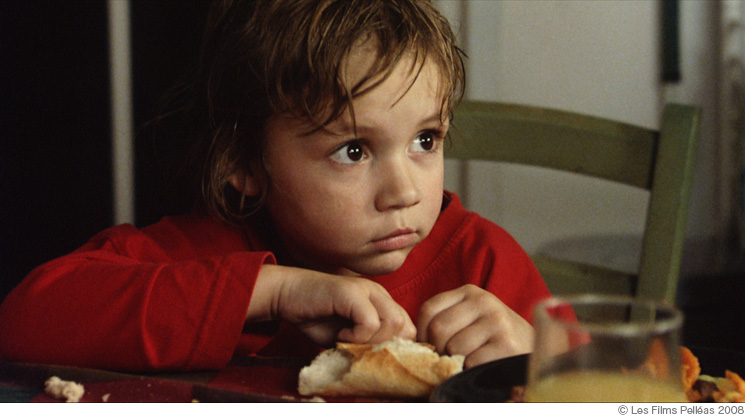
There are many perspectives in the film; the perspective of the camera, the perspective of the audience, the perspective of Max as Enzo and the perspective of Guillaume as the homeless Damien. How did you plan to coordinate all these perspectives with the right balance?
That is a good question. The perspective of this film is innate to this film. There are three main characters in the film. And yes, it was difficult finding the right balance in the story, in how the story should be followed. We start from the mother, and when she disappears, the camera overlaps with Damienís perspective, and then with the child as he grows up. It may be difficult for the audience to follow since the film constantly changes. So in order to complete this film in terms of balancing all the camera angles, it also requires the audience to understand and grow with the film.
The story has very simple elements. Simple acts as eating, sleeping, learning to fear and walking. They are all very simple. There are many simple scenes, and because of these scenes, it can fundamentally resonate in a deep place. Since this deeper part in people can only brought about from a gradual change, the audience will have to come to an understanding in a process similar to this.
But in order to express this dramatic visual in the length of two hours, it needed more elements. So this is why it was necessary to summarize in different ways to bring it all together.
Did you try out various ways to bring out this balance in perspective effectively?
The way I work, be it in fiction or in documentary, is that I first set the so-called real world a base. The reason is, because in reality, no matter how real it is, if one needs to pursue and concentrate on the reality, it will always include the intimate and romantic aspects. For example, in this film, there is the childís reality. Within this reality, even though it is fiction, there exists a world of childrenís books. So reflecting that reality, I put in a scene where they read a childrenís book. In this same reality, there is the theme of poverty which functions in different ways depending on the generation. So the poverty is seen through their reality, which is real to them. For example, in the hut, you would understand if you see the images, but there are elements of a painting, like a Caravaggio painting. So then there is a connection between reality and documentary when you see the reality as a painting. French films are relatively seen as naturalistic, so I intentionally wanted to break this. It is a very realistic theme, but shooting this in a documentary style, there is a very poetic scene, or a very imaginative scene, or scene full of spectacle. There is also a very intimate scene where Nina and Damien spend the night together as man and woman. So there are many different elements in this film.
What kind of balance were you seeking as a director, such as the balance between fiction and documentary?
There were two types. One of the negative reactions was, they do not see so many police in Paris. This is a lie, some people said. Another point was that this film does not clearly criticize how these people are wrong and how certain things are bad.
In the film, Damien played by Guillaume has a grudge with his father, but in real life, it was rumored that Guillaume himself and his father (the famous actor Gerard Depardieu) had a grudge. It may not be right to ask when Guillaume is gone, but did you talk to him about it when making the scenes? Or did you have any personal experience that you wanted to reflect on the film?
The actor has two ways to play a role. The first is to play for him/herself. The second is to play for the character. They are two different attitudes. The reason why Guillaume is a great actor is that he can play for the character. He will put everything he has got into the character. It is wonderful to see this happen, and this can be done because he has no limit. My work as a director is to bring the elements of the character to Guillaume, the actor. This work, through visual images, happens everyday as we shoot along, but he seemed to have been finding memories and connections to this film from his past. As he communicates with Max through acting during the shoot, it seemed to remind him of himself as a little boy. Shooting the scenes in the woods would connect him to his memory growing up near the forest of Versailles. My role then, is to bring the situation closer to the character.
Regarding Guillaume and his father, I donít know Gerard Depardieu personally and have no idea what kind of grudge they might have had. And what kind of message Guillaume wanted to personally deliver through this film, is something only he may know.

